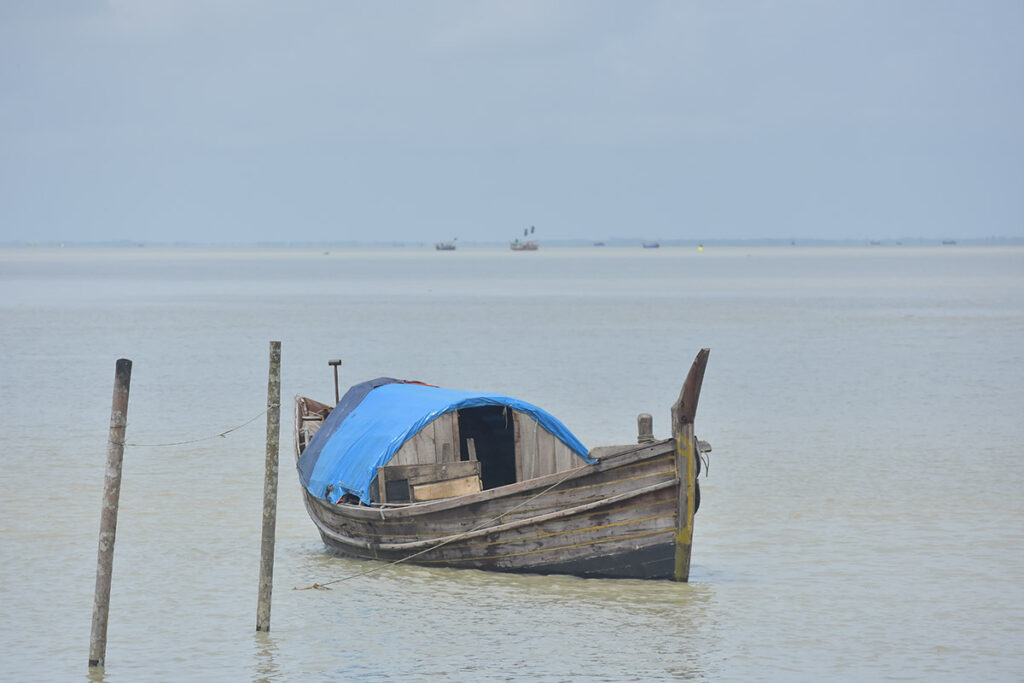Bangladesh's coastal regions, spanning nearly 710 kilometers along the Bay of Bengal, are among the most disaster-prone areas globally. The combination of geographic exposure, socioeconomic vulnerabilities, and the impacts of climate change place these regions at high risk. With over 35 million people living along the coast, this area faces regular threats, including cyclones, tidal surges, coastal erosion, and saltwater intrusion, which severely affect communities' livelihoods and well-being.
Geographic and Environmental Exposure
The coastal districts are situated on low-lying lands, which are exposed to extreme natural forces. The Bay of Bengal funnels cyclones towards Bangladesh’s shores, intensifying storm surges. Rivers flowing from the Himalayas also deposit sediment, making the deltaic region vulnerable to rapid erosion and land loss. Salinity intrusion further exacerbates these issues, damaging freshwater resources, crops, and soil quality, affecting agriculture and drinking water supplies.

Climate Change and Rising Sea Levels
Climate change has amplified these natural hazards. Rising sea levels have led to accelerated coastal erosion and increased saltwater intrusion, threatening the habitability of these regions. Cyclones, such as Cyclone Sidr in 2007 and Cyclone Amphan in 2020, have demonstrated the growing severity of climate-induced storms. These events displace thousands of people, erode critical infrastructure, and disrupt agriculture, leaving long-lasting impacts on the coastal economy and ecosystem.
Socioeconomic Vulnerabilities and the Impact on Livelihoods
The coastal districts are home to some of Bangladesh's most marginalized communities. Livelihoods in these areas depend heavily on fishing, agriculture, and aquaculture, sectors that are extremely sensitive to climatic changes. Losses in crops, livestock, and fish stocks result in severe economic strain, pushing many families below the poverty line. Limited employment opportunities force community members to depend on natural resources, further straining already depleted ecosystems. Many families also resort to migration, either seasonally or permanently, as a coping mechanism.
Health Impacts and Public Health Infrastructure Challenges
Disasters not only affect livelihoods but also create severe public health risks. Salinity intrusion contaminates drinking water sources, leading to health issues like skin diseases, hypertension, and maternal health problems. After cyclones and floods, the spread of waterborne diseases such as cholera and diarrhea becomes a significant concern. The lack of access to healthcare facilities, combined with limited emergency preparedness, exacerbates these health challenges, particularly in remote areas.
Existing Challenges in Disaster Preparedness and Response
Despite progress in disaster management, many coastal areas lack adequate infrastructure for effective preparedness and response. Cyclone shelters, while lifesaving, are often insufficient in number and capacity. Moreover, communication systems and early warning mechanisms are sometimes unreliable in remote regions, making it challenging to reach everyone in time. The need for resilient infrastructure, such as storm-resistant housing and reinforced embankments, remains unmet due to limited financial resources.
Ecosystem-Based Adaptation and the Role of Mangroves
Mangrove forests, particularly the Sundarbans, play a crucial role in protecting coastal districts by acting as a natural barrier against storms and erosion. However, mangrove depletion due to deforestation and land-use change reduces this natural protection. Ecosystem-based adaptation, including mangrove restoration, is essential for enhancing resilience in coastal areas. Mangroves not only protect against storm surges but also support biodiversity and improve water quality, creating a sustainable livelihood source for local communities.
Building Community Resilience and Adaptive Capacity
For coastal communities to withstand and adapt to these increasing risks, community resilience and adaptive capacity must be prioritized. Training programs in disaster preparedness, sustainable livelihoods, and ecosystem management can empower communities to respond effectively to disasters. Additionally, investing in alternative livelihoods, such as salt-tolerant agriculture, crab farming, and ecotourism, can reduce dependence on vulnerable sectors.